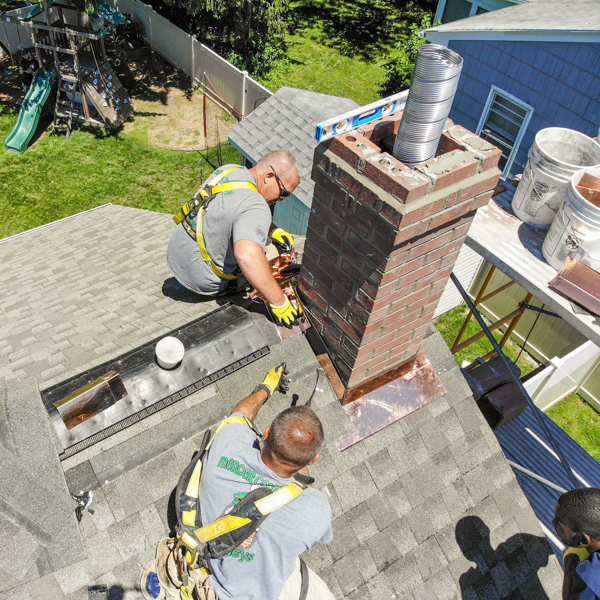Is Your Fireplace Safe? Here’s how to Find Out
 Annual fireplace and chimney inspections are a critical element of fireplace safety. In between inspections, there are several things you can watch for that will clue you in to a possible problem with your fireplace or chimney (or gas fireplace venting system).
Annual fireplace and chimney inspections are a critical element of fireplace safety. In between inspections, there are several things you can watch for that will clue you in to a possible problem with your fireplace or chimney (or gas fireplace venting system).
Quality of flames
A wood fireplace should produce a clean, robust flame that rises along with the smoke going toward the flue opening. A gas fireplace’s flame should have a bluish tint that ignites quickly.
Lackluster flames could mean a draft problem in a wood fireplace, which could point to debris or excess creosote buildup in the chimney. In a gas fireplace, sluggish flames often mean there’s a reason that consistent and sufficient fuel isn’t making its way into the burn area. This could be clogged or damaged fuel lines or a problem with the burner.
Firebox integrity
Visually examine your firebox. Look for cracks, splits, crumbling bricks and other signs of damage. A firebox’s integrity is to keep intense heat and flames from getting to adjacent materials of your home and starting a fire.
Gas smells
If you use a gas fireplace, always be on the alert to the smell of gas. If you smell gas while the fireplace is operating, shut it off if it’s safe to do so. If the smell continues, leave the house and call 911. In either case, schedule an appointment with a licensed fireplace inspector before using your appliance again.
Install a carbon monoxide (CO) monitor
If there’s a gas leak, you may or may not smell it. But a good CO monitor will. Install the monitor close to the fireplace and in exact accord with the manufacturer’s instructions. Test it regularly and replace the batteries once a year, whether you need to or not.
Visually inspect the chimney
Most fireplace problems are actually chimney problems or problems with one or more of a chimney’s components. When checking your chimney, look for:
Damaged chimney cap
A damaged cap may allow water from rain and snow to get into the chimney flue.
Cracked chimney crown
Concrete chimney crowns cover the top of the chimney minus the flue openings. Cracks in the crown give water a way to get into the inner areas of your chimney and also damage the bricks below the crown.
Masonry issues
Cracked bricks and crumbling masonry often are signs of water damage – but not always. If you see these issues, have your chimney inspected.
Efflorescence
This is the white staining on an exterior chimney, caused by water penetrating the bricks and leeching salt from them. Big problems could be on the way, depending on how much water the bricks are absorbing.
 Warped or damaged chimney flashing
Warped or damaged chimney flashing
The flashing that seals the gap between the chimney and roof must be in good shape, otherwise water can drain down into unseen areas of the home.
Leaning chimney
Have a leaning chimney inspected right away or you could be faced with not only more extensive damage, but a potentially dangerous situation.
Smoke stains
Smoke stains on or around the top rim of the chimney may mean a chimney fire has occurred. Have this looked at by a professional.
Keep your fireplace and chimney safe all year
Safety for your fireplace is a joint effort between you and your chimney services professional. If you do your part and let the pro do his or her part, you’ll have a fireplace/chimney system that works safety and efficiently and brings you all the enjoyment you expect.
Mercer County Chimney Service provides licensed chimney inspections, chimney cleaning and chimney repairs in Trenton NH, Princeton NJ, Ewing Township NJ, Hamilton Township NJ, and other local communities.
Call us today at (609) 802-5288.


